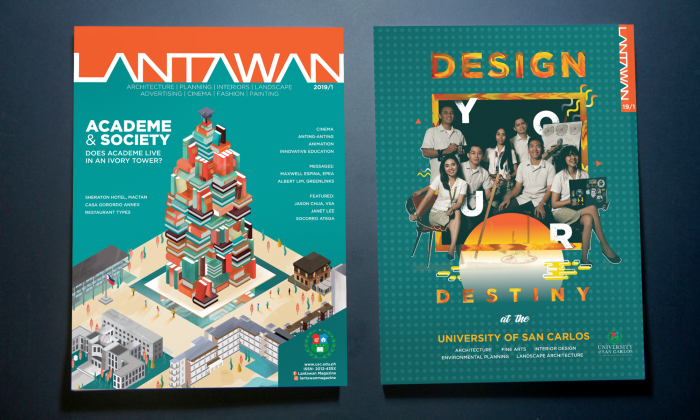By Michael Bon D. Samson
On the 24th of January this year, the Architecture Society at the University of San Carlos welcomed the new semester productively with forward-looking design talks! Aptly named “Visionary Approach: Digital, Brutalism, and Planning,” the event focused on such riveting topics as the digital world of design, the Brutalist movement trending worldwide, and resilient city planning amid 21st-century challenges. The SAFAD theater was packed with students, instructors, and guests. The presenters consisted of Architects Amon Cali and Ralph Richard Su, as well as Architectural Designer Justine Borgueta. A roundtable discussion allowed the audience to raise questions to the presenters. This exchange not only proved to be interactive but also positively insightful.

All ears were on Architecture instructor Br. Bela Lanyi during his Opening Remarks on stage with 5th-year student of architecture Rax Milan who was notably behind the well-received post featuring Amon Cali’s work, the Execration Bootcamp for Gamers, on Lantawan Magazine’s Facebook page. The online post which will turn three years old on June 15 this year, has been viewed almost one million times on the social platform. Photo taken by the author.
BRANDING AND BRUTALISM BY AMON CALI
Amon Cali, who in addition to his profession was also introduced as a rapper and streetwear enthusiast, recounted how his younger self wanted to be a carpenter; someone who would know what to do with the things in their house that needed repair. He confided that growing up, his interest found its home in mathematics and the arts. Thus, despite performing poorly in high school, he excelled in his design courses in college and graduated in 2016. Time stood still when cases of the COVID-19 virus began to spike worldwide three years later. However, forward-thinking Cali persevered and eventually launched his firm, the Cali Architects, in the wake of the pandemic. Cali Architects’ brand would come to be reputed for its simplicity and geometry which is reflected in the firm’s logo.
At the start of his practice, Cali endeavored to design minimalistic furniture as award-winning Filipino industrial designer Kenneth Cobonpue who in addition to being celebrated for his natural and handmade brand of furniture design and production, also happened to be one of Cali’s idols in the industry. This led to the formal introduction of Cali Architects to the world: the “Charcoal” furniture collection that consisted of the pieces “Basalt,” “Ottoman,” and “Zen Sofa,” with inspiration from the Japanese wabi-sabi concept of finding beauty from imperfection, too.

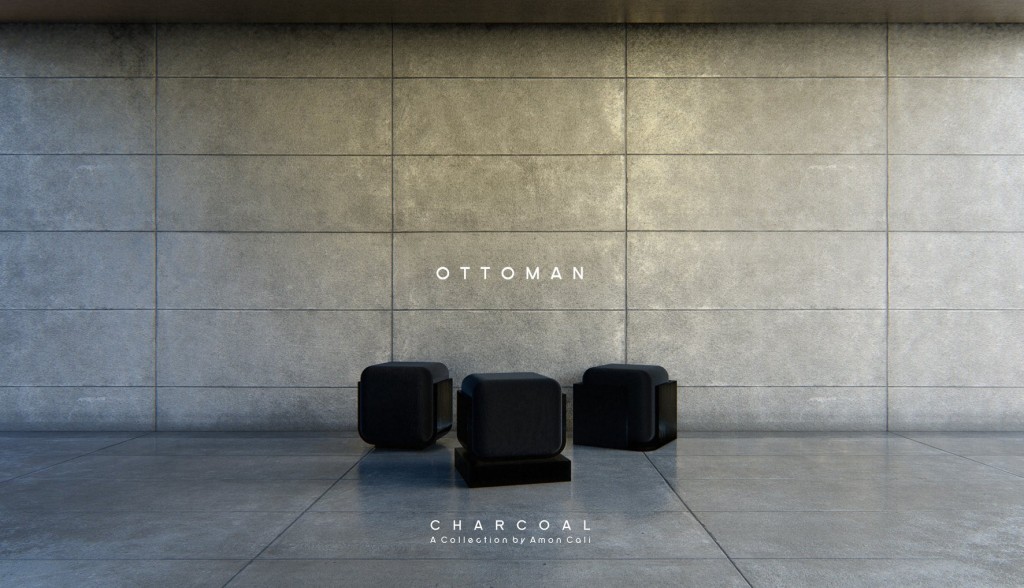

(From left to right) Basalt, a cantilevered table. It inspired Cali to branch out his practice to floating volumes and block geometries, and as such is one of his favorite creations. Ottoman, also from the collection. Zen Sofa, which is unlike the typical sofa that causes you to slouch for it instead promotes proper posture. Images taken from the Cali Architects Facebook page.
Cali explained that with all the furniture he had fashioned, he felt the need to design a venue for them. He asked his fellow members in the Brutalism Appreciation Society (BAS) about tiny Brutalist houses, but was told there was no such thing. Then Cali knew exactly what he had to do and went on to design the “Peu Brut”. According to him, peu is French for “little”, and brut means “raw.” He took the latter from the phrase beton brut which translates to “raw concrete.”
The Peu Brut featured compact storage spaces to declutter the small living areas of the house, as well as a sleeping loft under a skylight that was strategically placed to eliminate the claustrophobic feeling of the low ceiling. Cali wanted to maximize the light that entered the bathroom, so he placed a large window before plants that protruded from the profile of the house which then also served as a natural curtain. Cali found his niche in the Peu Brut. Moreover, he found that brutalism and nature tend to go hand-in-hand because brutalist structures not only complement the greenery but also age alongside them in a look that appears more wholly developed with time. He has convinced many that brutalism ages like fine wine.


The Peu Brut by Amon Cali. Photos were taken from the Cali Architects Facebook page.
Cali went on to share numerous projects with his signature aesthetic. His smart villa called Casa Borbon is complete with a CCTV and lighting system to be operated from virtually anywhere through an internet connection. According to the architect, the clients were actively engaged in the project and even took the helm in curating the furniture for the house.
The Execration Bootcamp for Gamers which was covered by the Lantawan website in a feature post, garnered several thousand likes on Facebook; thus it had a special place in Cali’s presentation. For this particular project, he wanted to integrate a cyberpunk aesthetic inspired by video games and sci-fi movies like Blade Runner. He explored the idea of light filtered through windows in a gaming setup as opposed to the gamers’ typically enclosed arrangement. The green roof integrated into the design functioned as a space for the occupants to unwind from their online activities. Cali observed that gamers are predisposed to being passionate while gaming. They know what they want. So, he advised his audience to get to know themselves more, to explore, and to build a fire inside their hearts. They can use that drive to passionately make a difference in the world.
CITIES AND CHALLENGES IN THE 21ST CENTURY BY MR. JUSTINE BORGUETA
Following a brief intermission, USC Alumnus in Australia, Mr. Justine Borgueta was called on stage to share his piece on a different but related topic involving city planning and challenges. Mr. Borgueta is a USC Alumnus who migrated to New Zealand where he started as an assistant urban designer. He is now a senior urban designer for Hatch|Robertsday in Australia. He expressed that professionals coming from overseas face stiff market competition there. Still, residential architecture in the form of townhouses, apartments, and condominiums became his bread and butter. He would eventually foray into urban design for his love of cities and their potential to help more people. Cities, after all, are home to more than half of the global population, and so planning them requires a sensitivity to human needs and an ear to the need for sustainability.
In the course of his presentation, Mr. Borgueta tackled the rapid urbanization spurred by the exponential growth of the human population, a global challenge in addition to climate change. He voiced that humanity’s ability to have a “forward vision” will determine the survival of future generations. Having an eye for the future involves continually searching for ways to develop more resilient and sustainable cities and communities. Mr. Borgueta explained that global trends offer insights on how cities are responding to the present predicament. One such trend is New Urbanism, which is an integration of city functions into closely-knit communities. The idea is to design the urban landscape so that everything is essentially within walking distance. This eliminates the need to use personal vehicles to get around. Residential neighborhoods are linked to the metropolitan area through public transit. Some cities around the world are working to implement the “15-minute City” idea. This means that basic needs such as education, healthcare, and work are accessible within fifteen minutes of walking or riding a bike. Mr. Borgueta impressed on his audience that if city streets are designed to be safe and enjoyable for kids or persons with disability (PWDs), they also serve all residents better.
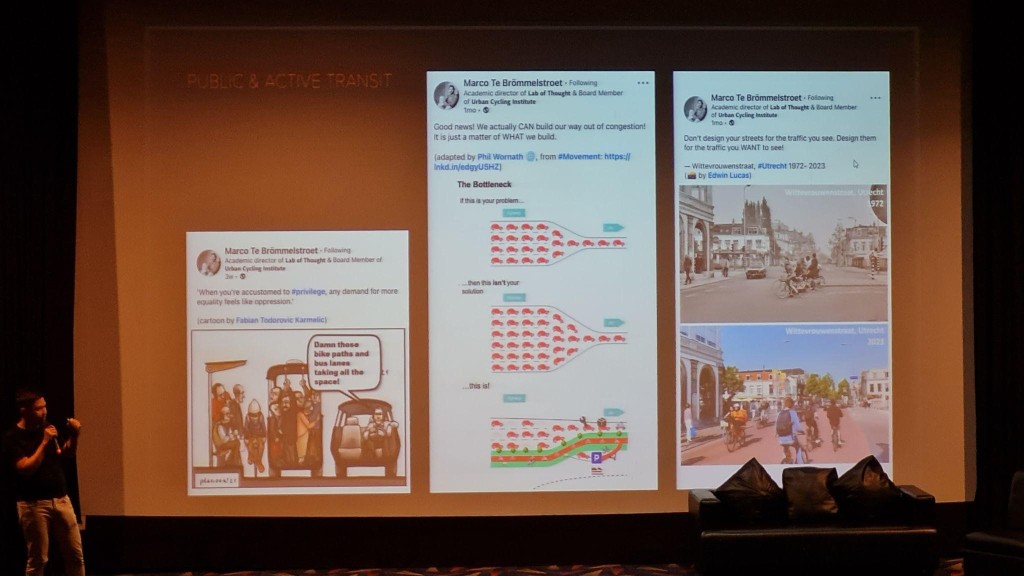
Mr. Borgueta related with his young audience by sharing meaningful memes with clever captions, concerning public transit and how they could improve the flow of traffic in cities and other urban areas.
PROCESS AND PROTEST BY RALPH RICHARD SU
The third and last presenter was Ralph Richard Su, another USC Alumnus who finished his Master of Arts in Environment Design at the University of the Arts London in 2016. He is the current Principal Architect of his firm, RRSA, and an instructor at SAFAD. Su began his presentation by posing the question, “Can concrete possess beauty?” He declared that there is a public divide between those who deem structures with the Brutalist aesthetic to be valuable historical pieces and those who consider them to be monstrous creations. He then asked the audience whether or not they believed what he had just said. and soon after revealed that it was a script written by text-generative artificial intelligence (AI) through the prompt that he gave it. His handwritten slideshow protest declared that “humans cannot be replaced by AI.”
Su shared that he looked up to countless architects and their broad range of styles. He started with modern contemporary architecture in the Philippines, and now that he owns a firm, RRSA. He looks up in particular to famous architects Ludwig Mies van der Rohe, Walter Gropius, and Le Corbusier. However, he warns his audience against merely blindly idolizing architects of international renown to the point of starting outside context and designing without process. The same was said about merely plucking ideas from images off Pinterest. For a design to be authentic, it has to follow the process. This process, according to him, first involves researching one’s idols to discover the designer behind the celebrity. From there, one can apply a situation or context, test it out, and fail as many times as necessary. He added that architects with a process are not in search of perfection and that the glory is in the attempt, not the result.
One must experience the highs and lows of the design process, both the fulfillment of “Eureka!” moments and the frustration, to grow as a designer. Frustration, according to Su, is a good indicator of care. He then introduced to his audience the “Impostor Syndrome,” which is the point when designers self-doubt and question if they are authentic. The cure? Having a process. That makes one authentic. Su also urged his audience to exercise introspection, research, and experimentation, as well as to observe integrity through honesty, and mastery through understanding.
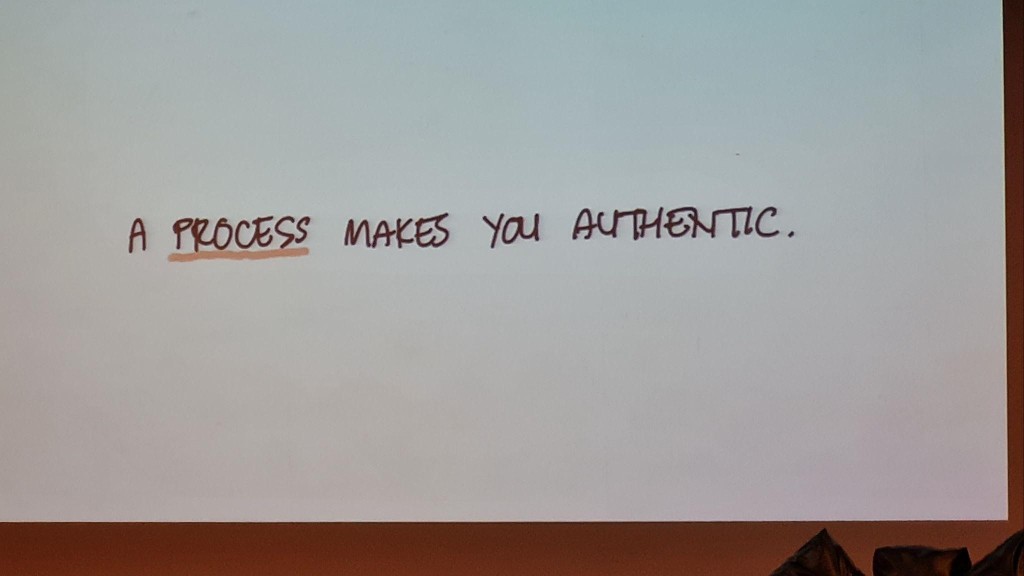
Photo of a slide from Ar. Su’s presentation taken by the author.
HOW CAN YOU DESIGN SOMETHING FILIPINO WHEN THE INFLUENCE IS FOREIGN?
This was the question raised by the author at the roundtable discussion mediated by none other than the Chairman of the Architecture Department, Ar. Adrian Yap. This question was prompted by prior discussions concerning the authenticity of designs inspired by the works of international leaders in the field of architecture. Ar. Yap was prompt to respond to the question by stating that an international identity can often be attributed to the use of materials and their application in the design. Wood, for instance, is a recognized element of design in the Philippines and that serves to strengthen identity. which is how foreigners and Filipinos themselves perceive architecture in the country. For Amon Cali, the answer lies in the context. For him Filipino ingenuity uses foreign influences to solve the problems in a Filipino way..
Mr. Borgueta answered the question based on his experience as an urban designer when he stated that the architecture of a place instills a certain feeling in the people. How the design on a macro level makes the people feel will define the character of that place and form its identity. For Su, it is less about making one’s own architecture purely Filipino and resisting the outside influence one could learn from. It is rather adding it and applying it to the Filipino context. He urged everyone to be responsible citizens of the world. This can be done by recalling the context for inspiration from outside. Merging international and Filipino education will come up with an authentic design.
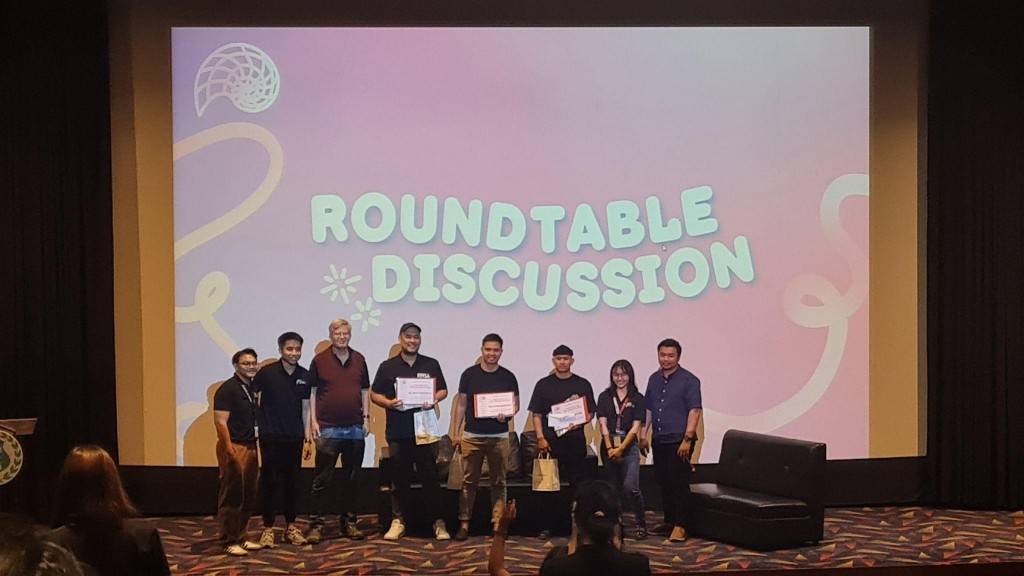
Guest speakers Ar. Ralph Richard Su, architectural designer Mr. Justine Borgueta, and Ar. Amon Cali at the SAFAD theater with their certificates of appreciation. They are joined on stage by USCARS-UAPSA VP-External Geoffrey Luis Montecillo, USCARS-UAPSA President Iolo Keon Villegas, and Br. Bela Lanyi on the left, as well as Architecture Department Chair Ar. Adrian Yap and USCARS-UAPSA VP-Internal Kyra Lim on the right. Photo taken by the author.
The roundtable discussion brought about a meaningful end to an equally meaningful event. Seeing the world through the eyes of visionaries like Amon Cali, Justine Borgueta, and Ralph Richard Su creates a whole new world altogether. Brutalism being back in fashion since the 1950s is something unexpected, but Amon Cali was able to adapt trendy Brutalism to his own path. On the contrary to media which pinned the major problems of the modern world on the rapid rise of the human population, Mr. Borgueta paints a better picture. Rather than being a problem, the increase in population should be viewed as a challenge for humanity to plan cities and use resources innovatively towards a more sustainable future where every new life that is brought into the world is given equal opportunity to thrive and prosper. Finally, Su’s wisdom was a reminder to the audience that being consumed by someone else’s identity deprives one of their own. Moreover, when in doubt, diligent work with a process nurtures one’s authentic self. The well of wisdom from the presenters remains invaluable. Truly, visionaries see the future not as a disconnect from the realities of the present, but as a link for the ideal to be made real.

